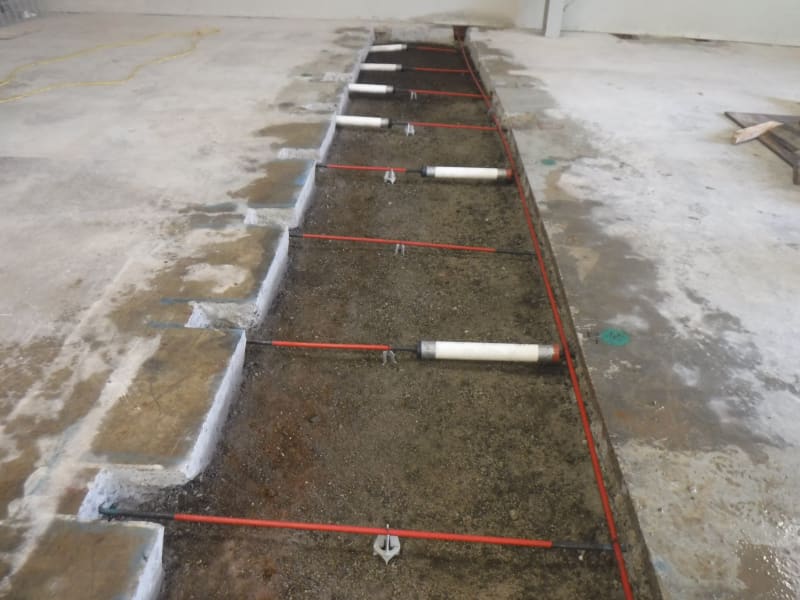Background: I have run across an existing building with a post tensioned slab on grade spanning between grade beams and belled piers bearing approximately 10'-12' on bedrock. The building is three stories, approximately 25 years old, is configured in plan view as an "X" shape, and is relatively large - think college dormitory.
The contractor was trenching through the slab in one room of the building to install plumbing and cut several tendons during the process. I was told there was not a void under the slab and the soil borings appear to indicate decent soils at least in this portion of the building. Other portions of the building may have had 5'-6' of fill which may be the reason for the post tensioning and grade beam system.
Question: Is retensioning the tendons possible? Feasible? Necessary? Problematic? I am not too worried about the vertical support of the slab due to the soil bearing beneath the slab. I am more curious about potential cracking or other unforeseen consequences of retensioning the tendons or even leaving them untensioned.
Any insight would be appreciated. Thanks!
The contractor was trenching through the slab in one room of the building to install plumbing and cut several tendons during the process. I was told there was not a void under the slab and the soil borings appear to indicate decent soils at least in this portion of the building. Other portions of the building may have had 5'-6' of fill which may be the reason for the post tensioning and grade beam system.
Question: Is retensioning the tendons possible? Feasible? Necessary? Problematic? I am not too worried about the vertical support of the slab due to the soil bearing beneath the slab. I am more curious about potential cracking or other unforeseen consequences of retensioning the tendons or even leaving them untensioned.
Any insight would be appreciated. Thanks!


![[bigsmile] [bigsmile] [bigsmile]](/data/assets/smilies/bigsmile.gif)